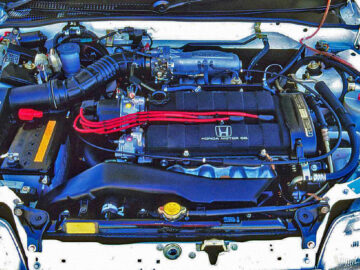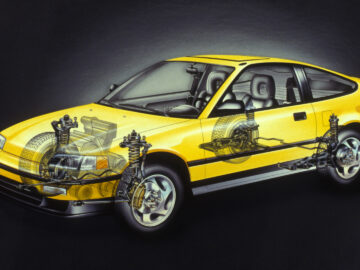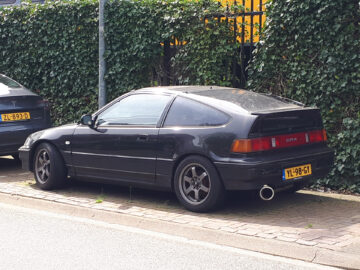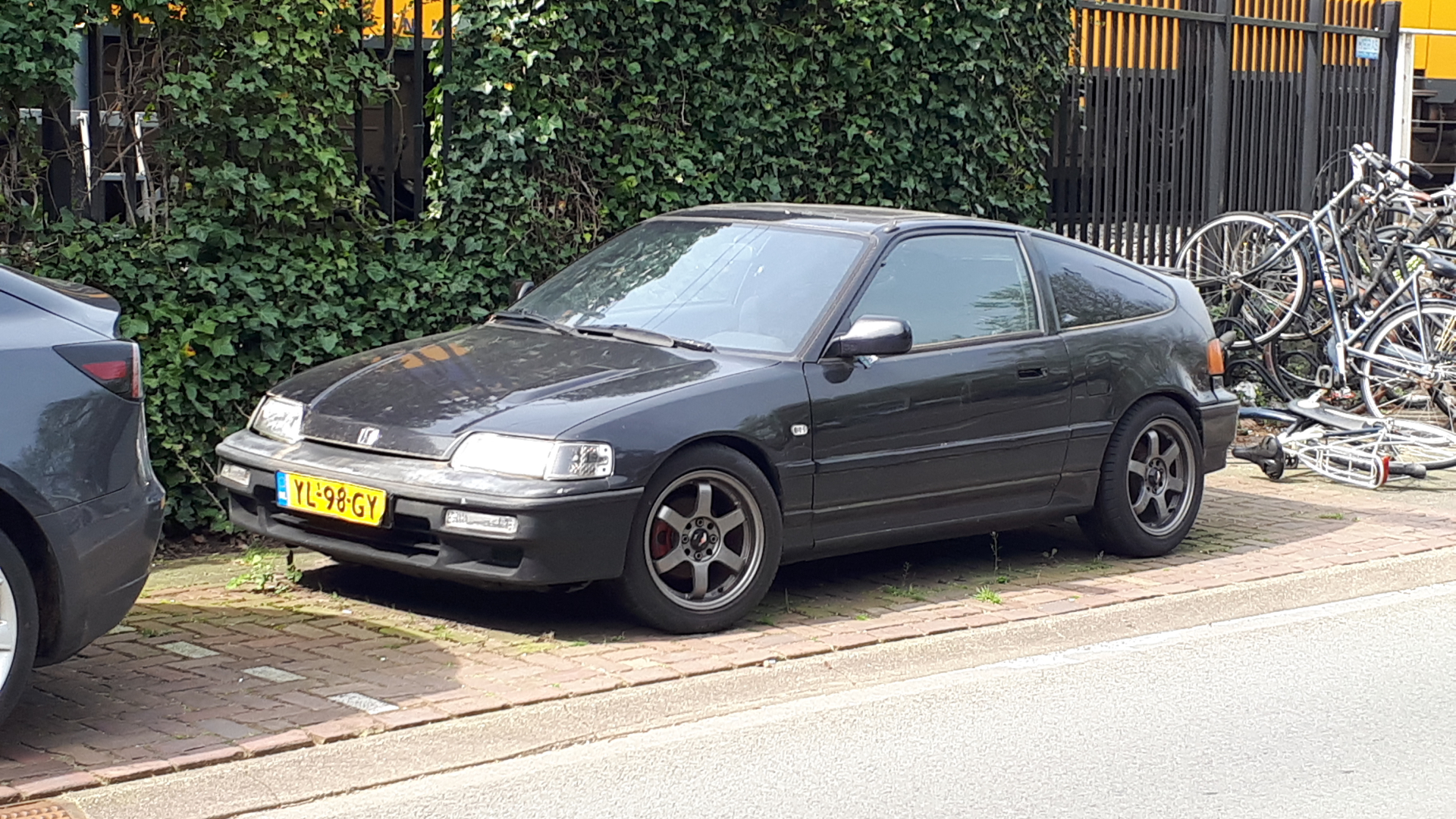Spotted: an original Dutch Honda CRX
First a clarification: what is the name of the car? Colloquially, the coupe version of the Civic is almost always called “Honda CRX,” but in different world markets, the model carried different names. In homeland Japan, for example, the model was introduced as Honda Ballade Sports CR-X. The Ballade was a Civic-related model line delivered only in Japan. In most other markets, the model was called Honda CR-X, although that was sometimes spelled Honda CRX. In some markets, including Europe, the model was priced as the Honda Civic CRX. Sometimes, as in the Netherlands, again with the addition Coupe. For convenience, we’ll stick to “Honda CRX” in this article.
Second-generation Honda CRX is evolution
The first-generation Honda CRX debuted in 1983 and was a success. So a new model generation followed in 1987, based on the now new Civic. In terms of design, the new CRX was even more emphatically a coupe version of the Civic, but the model retained its distinctive roofline. Thanks in part to independent wheel suspension, handling improved, making it even more popular than the first model with those looking for a sporty driving car for (relatively) little money.



Engines and performance
The Dutch engine lineup was nice and clear: there was only a 1.6-liter four-cylinder gasoline engine. This delivered 96 kW (131 hp) and 143 Nm when introduced, good for a 0-100 time of 7.5 seconds and a top speed of 212 km/h. You could certainly come home with that in those days. In 1989, power was reduced slightly to 91 kW (124 hp) and torque to 140 Nm, but in 1990 the now famous VTEC made its appearance. Back then, the engine produced 110 kW (150 hp) and 144 Nm. Performance increased to a 0-100 time of 7.2 seconds and a top of 222 km/h. The transmission was always a five-speed manual transmission, with drive to the front wheels. In other countries, a 1.4- and 1.5-liter four-cylinder were also on the price list.
The 1990 technical update also included a very subtle facelift, with minimal changes to the exterior and interior. For Europe, the facelift was slightly more extensive, as we have since received only the VTEC engine and it had slightly different details from the non-VTEC models anyway.


(G)a new Honda CRX
By 1991, the Honda CRX’s career was over. It was replaced by a compact convertible, which was somewhat more competitive with cars such as the Toyota MR2. This convertible was sold in the Netherlands as Honda CRX (without further additions), but is better known internationally as Honda CR-X del Sol, Honda Civic del Sol or Honda del Sol.
The spotted specimen
In Hilversum, we saw this Honda Civic CRX Coupe 1.6i, original Dutch from 1990. Like many other surviving examples, this one is unfortunately no longer completely original. These sport rims don’t even look wrong on him, but why did it have to have such a chute under the rear bumper? Otherwise, apart from a color faded front bumper, it looks clean and unspoiled.



